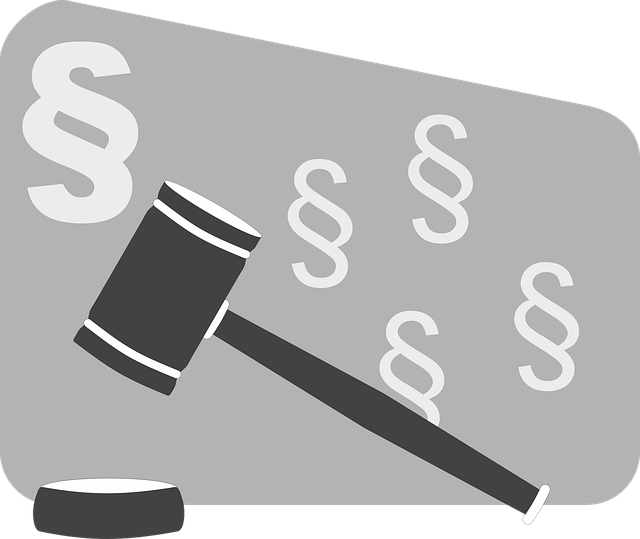Regulatory fraud cases often hinge on understanding entrapment defenses, crucial tools in criminal law to protect against unjust indictments. Entrapment occurs when government agents encourage or induce individuals to commit crimes they wouldn't have otherwise, with two main types: subjective (defendant's coerced mindset) and objective (excessive investigative tactics). These defenses are vital for fairness, as seen in cases where undercover agents incite fraud, leading to potential charge drops or reduced sentences. In the digital age, with complex schemes and advanced technology, distinguishing legitimate investigations from entrapment is essential to maintain integrity in regulatory fraud prosecutions.
Regulatory fraud laws are essential components of our legal system, designed to protect against deceptive practices in various industries. This article offers a comprehensive understanding of entrapment defenses within criminal law, a crucial strategy for those facing regulatory fraud charges. We explore how these defenses work, different types available, and real-world success stories. By delving into the future of entrapment in regulatory cases, we provide valuable insights into navigating these complex legal landscapes. Discover the intricacies of entrapment defenses and their role in ensuring fairness within criminal justice.
- What are Regulatory Fraud Laws?
- How does Entrapment Defense Work in Criminal Law?
- Types of Entrapment Defenses
- Real-World Examples of Entrapment Defense Success
- The Future of Entrapment Defenses in Regulatory Fraud Cases
What are Regulatory Fraud Laws?

Regulatory Fraud Laws are a set of legal frameworks designed to combat dishonest practices in various sectors, particularly focusing on white collar and economic crimes. These laws aim to protect consumers, investors, and the public from fraudulent activities that can have significant financial and societal impacts. In the realm of criminal law, understanding entrapment defenses is crucial when navigating these high-stakes cases. Entrapment occurs when government agents induce or encourage a person to commit a crime they would not have otherwise attempted.
Avoiding indictment in such cases often hinges on demonstrating that an individual’s actions were not their own volition but rather a result of excessive government influence. This defense is particularly relevant in white collar and economic crimes, where complex schemes can blur the lines between legal business practices and fraudulent activities. The strategic use of entrapment defenses can mitigate charges, ensuring fairness in the justice system for those accused of regulatory fraud.
How does Entrapment Defense Work in Criminal Law?

In criminal law, an Entrapment Defense is a powerful strategy employed to challenge the legitimacy of a criminal charge. It revolves around the idea that government agents or officials unduly encouraged or induced a person to commit a crime they wouldn’t have otherwise attempted. Understanding entrapment defenses is crucial for those involved in high-stakes cases, as it can significantly impact the outcome. When an individual feels they’ve been set up or coerced into committing a crime, this defense becomes relevant.
The concept works by demonstrating that the defendant’s actions were not driven by their own criminal intent but rather by external factors, often involving persistent pressure from law enforcement. In such cases, a general criminal defense attorney can argue that their client was caught in a “web” of entrapment, protecting them from charges they believe are unjust. This strategy is particularly useful when dealing with complex situations where the line between lawful investigation and undue influence can be hard to discern.
Types of Entrapment Defenses

Entrapment defenses are a critical aspect of understanding criminal law, offering a way for individuals accused of crimes to challenge their charges. This legal concept arises when government agents or authorities induce or entice an individual to commit an offense that they would not have otherwise attempted. There are generally two types of entrapment defenses: subjective and objective. Subjective entrapment focuses on the defendant’s state of mind, arguing that they were coerced into committing the crime due to undue pressure from law enforcement. On the other hand, objective entrapment examines the conduct of the authorities involved in the investigation, asserting that their actions were excessively clandestine or overbearing, thus crossing ethical boundaries.
Both defenses are relevant throughout all stages of the investigative and enforcement process, from initial surveillance to the final presentation at jury trials. Understanding these mechanisms is essential for both prosecutors and general criminal defense attorneys, as it allows them to navigate complex legal terrain and ensure fairness in the administration of justice.
Real-World Examples of Entrapment Defense Success

In the realm of Understanding Entrapment Defenses in Criminal Law, real-world examples illustrate the power of entrapment as a strategy for those accused of fraud. Consider a case where an undercover agent poses as a potential investor and encourages an individual to commit investment fraud. If the defendant can prove that they were set up and had no genuine intent to defraud, it could lead to a complete dismissal of all charges. This is not an uncommon defense in general criminal defense strategies.
Jury trials have often been pivotal in such scenarios, where the accused’s actions are scrutinized under the lens of entrapment. If successful, this defense can result in acquittals or reduced sentences. For instance, a defendant who was entrapped into committing a fraudulent transaction through subtle encouragement and pressure might argue that their actions were not voluntary, leading to a compelling narrative for their general criminal defense.
The Future of Entrapment Defenses in Regulatory Fraud Cases

In the realm of regulatory fraud, understanding entrapment defenses in criminal law is paramount. Entrapment occurs when law enforcement officials induce a person to commit a crime they would not have otherwise contemplated or committed. The future of entrapment defenses lies in the nuanced application of these principles within the digital age. As regulatory fraud cases become more complex and often involve sophisticated manipulation through advanced technology, the line between legitimate investigative tactics and entrapment can blur significantly.
With the increasing use of surveillance software, AI-driven analytics, and other high-tech tools, law enforcement must be vigilant to avoid creating a false sense of criminal intent. The goal should be to ensure that any regulatory fraud charges brought are based on genuine, uninduced misconduct, rather than orchestrated activities. Avoiding indictment and jury trials will depend on this careful balance—defendants seeking complete dismissal of all charges will increasingly rely on entrapment defenses, making it crucial for both prosecutors and the judiciary to grasp these evolving dynamics.
Understanding entrapment defenses in criminal law is crucial for navigating regulatory fraud cases. By examining what are regulatory fraud laws, how entrapment defense works, and exploring real-world examples of successful defenses, we gain insights into the complex landscape of fraud prosecution. As the future of entrapment defenses evolves, particularly in light of changing legal interpretations and technological advancements, it’s essential to stay informed about these strategies to ensure fairness and accuracy in regulatory fraud cases.






